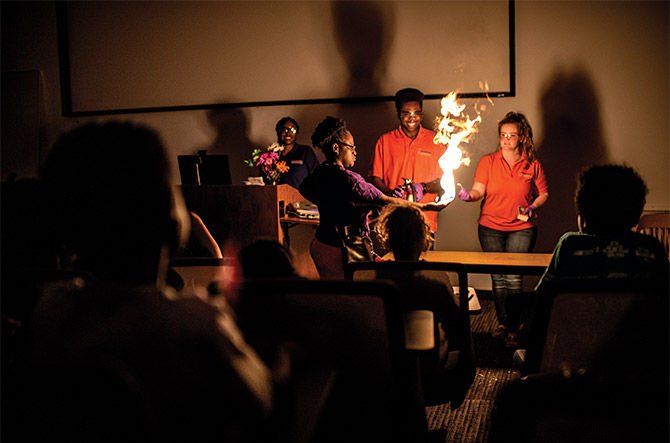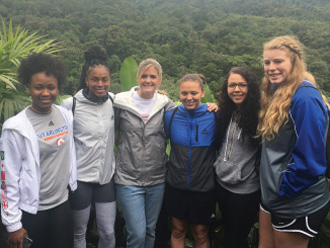One part class session and three parts explosive reactions, UTA's science ambassadors entertain and educate with experiments and the old "hand on fire" trick. As 200 elementary school students file into a UTA classroom, they eagerly await the show to come. Like a mad scientist's laboratory, the scene is set with colored beakers and containers labeled "flammable" and "volatile"—two words that fairly accurately describe the show.
You'll hear the same disclaimers on an episode of MythBusters. "Don't try this at home," the ambassadors stress, progressing through exciting displays of chemical reactions, colored flames, and even some well-timed explosions.
Averaging about 110 shows each year, this program has engaged over 100,000 students, teachers, and parents through interactive learning since 2008. Not just some boring textbook, this program reveals how fun science can be.
"Our science ambassadors are student leaders from every background you can think of," says Greg Hale, executive director and chief mad scientist. "We want our audience to not just be excited about the science, but to see themselves reflected in the ambassadors."
Do try this at home
Chemiluminescence
What you'll need:
- Two light sticks (frequently seen at hardware or camping stores)
- One drinking glass containing salt water and ice
- One drinking glass containing hot tap water.
Safety note: Don't use water that is hotter than the tap.
Steps:
- Turn out the lights.
- Bend one light stick (activating the chemical process to make it glow) and place it in the drinking glass containing salt water and ice.
- Bend the second light stick and place it in the drinking glass containing hot tap water.
Observations:
Which reaction happened faster? Which reaction glows brighter?



